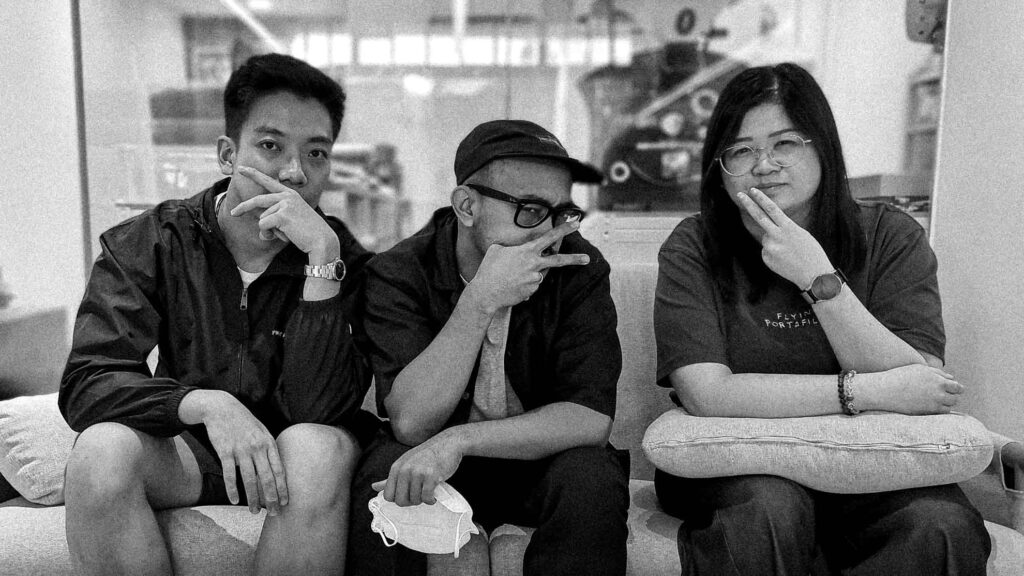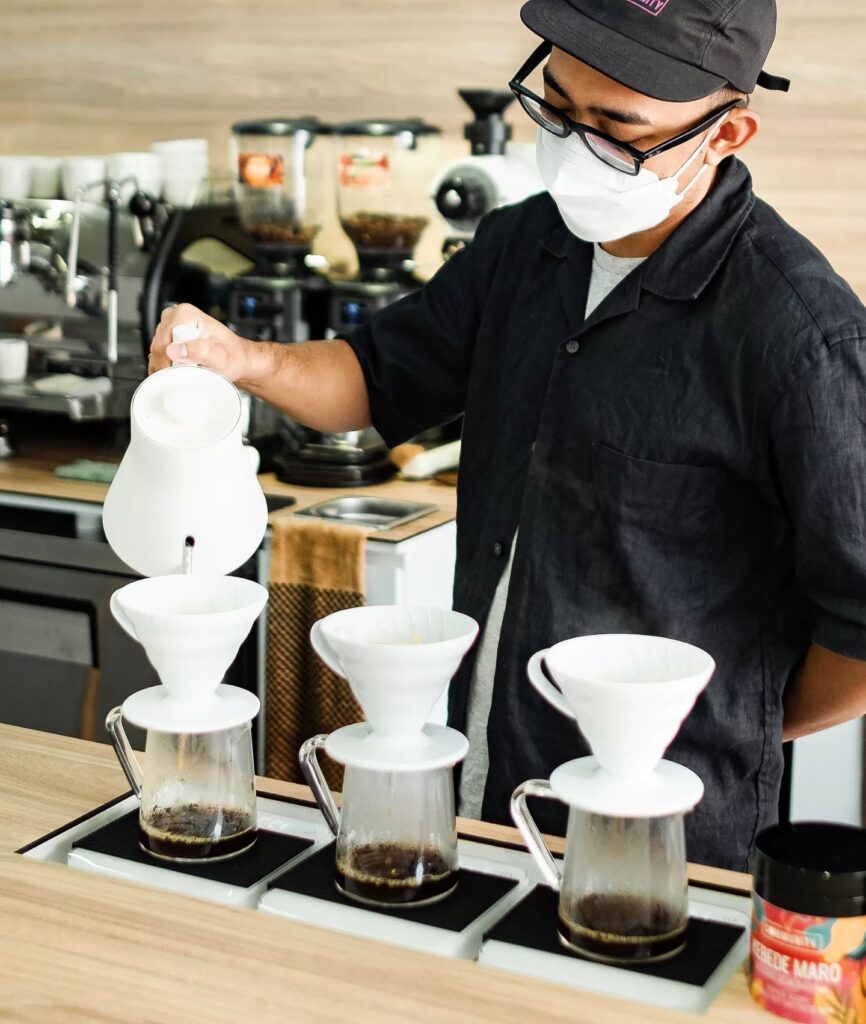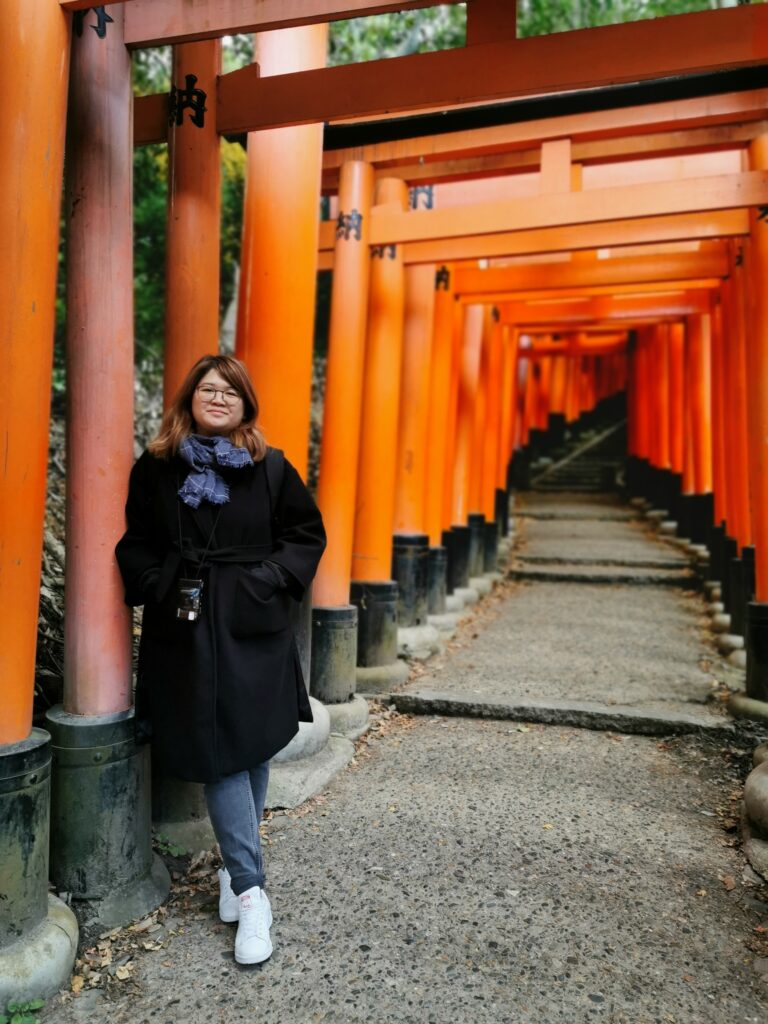Here’s a question for all coffee shop owners and baristas out there: Ever had trouble communicating with customers because you were unsure of their expectations?
Barista-customer interaction is a crucial cog in the machine, imperative to a specialty coffee shop experience. In a discussion between both sides of the coin, we dig deeper into what general consumers actually want from a specialty coffee experience, and how businesses can bridge the communication barrier to deliver better service.

Max, Aslam, and Sarah
We had a chat with two individuals – Aslam, Director of Coffee @thecommunitycoffee, and Sarah Lee @coffeetripsaroundtheworld, a full-time educator and coffee blogger, to learn about their thoughts on this topic.
You can also listen to the story of Aslam and Sarah on our Podcast
[buzzsprout episode=’10196789′ player=’true’]
Aslam

Aslam is making three brews at the same time
As a coffee shop owner and founder of the Singapore Roaster Forum, Aslam is a curious yet humble individual, constantly exploring new concepts in coffee, in which he shares his acquired knowledge with those under his wing. He describes himself as a coffee professional, not a barista nor a roaster as he believes that his roles are not only limited to daily operations behind the bar.
Aslam prides himself in his ability to make customers feel comfortable from the moment they step foot on the premises, he emphasizes that a barista should always take the initiative to strike a conversation. The first impression is paramount, on a customer’s first visit, the product may win them over, but the overall experience is what keeps them coming back.
A barista’s role is not solely restricted to brewing a good cup of coffee, they must possess a good sense for human behaviour to cater for varying audiences. While most walk-in customers may be looking to be engaged, others seek a quiet escape from their busy schedules. These soft skills are essential for a barista to be effective in his or her work, and it is a challenge that many businesses are facing in terms of training standards.
The method that Aslam prefers for first-time interactions would be to avoid conversations about coffee; he creates opportunities for curiosity while treading carefully, fully aware to not intrude on their personal space. Some of his conversation openers include asking people about their day, or what they had for lunch – everyone’s favourite topic is about themselves.
“It is unfair to profile customers, we do not curate a style of service for each segment, we take each one as they come. The moment we take the first step to break the ice, we begin to understand what attracts them, which allows us to adapt our approach to rein in more customers”.
As a business owner, it is important to understand your customer demographics as it will define their purchasing patterns. There is currently a large disconnect between what the specialty industry is building towards, and what coffee drinkers are looking for. As much as the coffee is the star of the show, the atmosphere and good service should not be discredited. If you can hit at least 2 out of 3 of these requirements, you’ve got yourself a returning customer.
Aslam recognizes that sometimes it may be difficult to engage customers especially when the team is slammed, service staff should focus on dividing their attention amongst all the guests, not just the regulars, so that nobody feels neglected.
Sarah Lee

Sarah Lee
Sarah Lee and Aslam have developed a close friendship over the years, which started out as a barista-customer relationship. These days, they converse about anything under the Sun, and of course, proactively exchange knowledge about coffee, and trading sample share coffees from time to time.
Sarah found her love for coffee about 5 years ago, in which she used to only consume the beverage for its caffeine properties, but later got sucked into the specialty circle as she explored more avenues of the craft; she loves travelling and spends most of her time overseas hanging around coffee shops.
Sarah claims that a barista-customer relationship is a two-way street, whenever someone sits at the bar by choice, they are looking to be engaged. Most of the time, people pay for the ambience, an escape from work or home to lament thoughts clogging their minds. And of course, to enjoy some coffee and conversations. Sarah enjoys sitting at the bar as well, so that she may observe how the barista prepares the coffee, and interact with them.
She feels that it is important for a coffee shop to provide power points and Wi-Fi for customers that require a space to work. Sarah notes that as customers, they must be responsible and not impose on the café if it is packed, to not deprive other customers that would like to sit in and enjoy the experience as well.
Pro tip: Sometimes a café may not provide free Wi-Fi, but if you befriend the staff and ask nicely, they might just give it to you.
As a home brewer from Singapore, Sarah mentioned that there are limited avenues to seek information about coffee locally, she has no choice but to read up on international sites to acquire knowledge, which never fails to overwhelm her. She finds it easier and more enjoyable to turn to baristas for guidance to avoid redundant data gathered from sources online.
If you are a newbie looking to learn more about coffee, take a seat at the bar and interact with the baristas; there is always something new to learn with the vast knowledge of information out there.

